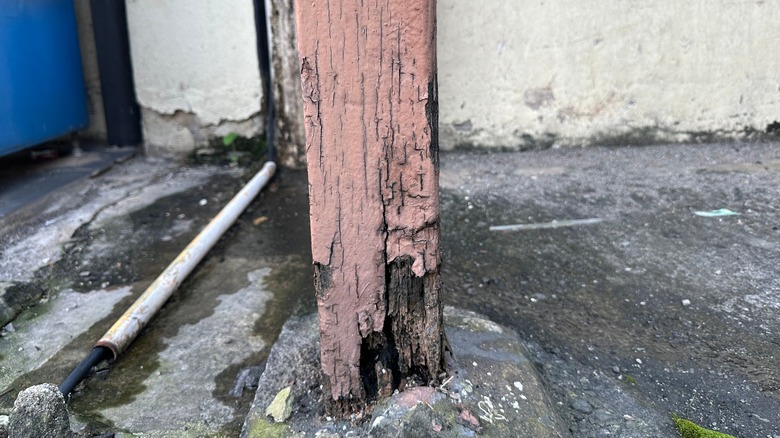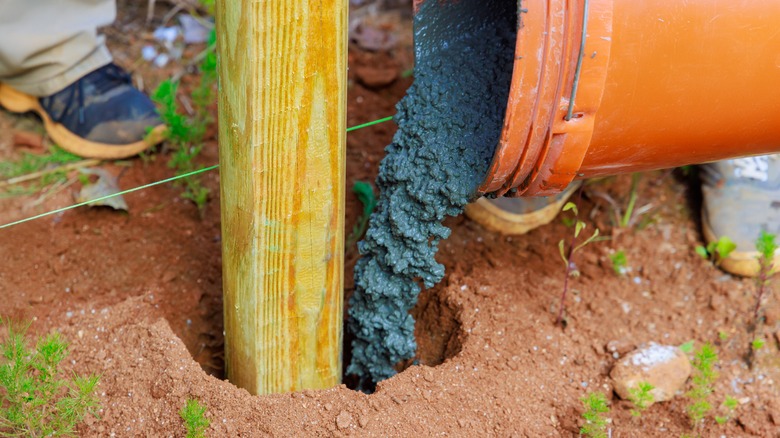How To Use Gravel To Prevent Fence Posts From Rotting
We may receive a commission on purchases made from links.
When it comes to fencing materials, it seems Americans are not ready to part ways with wood fences. Concrete and steel may boast of permanence; however, wood remains the most popular fence type in the United States. And for good reason. Nothing beats the look and feel of wood — and the custom fit that it provides. Plus, of course, wood is more affordable than other fencing materials. You will spend between $1 and $10 per linear foot for a DIY installation for a wood fence compared with $10 to $30 per linear foot for a vinyl. However, despite their beauty, sturdiness, and curb appeal, wooden fences have one frustrating downside: the posts often start to rot with time. Granted, certain wood types are better at braving the elements, specifically pressure-treated cedar and redwood, but generally, the lifespan of wood fences is about 15 years on average.
Can you use concrete to protect your wooden poles from rotting — or slow down the process? If you cover the base of your wooden poles with concrete, all it will do is trap moisture and prevent water from seeping downwards, creating an excellent environment for fungal decay and rotting. There's one secret remedy, though: using gravel at the base so that water can sip through.
Using gravel to prevent wood poles from rotting
The trick is to set your wooden posts above a layer of gravel, preferably 3 to 6 inches deep. The idea is to prevent the lower end of the pole from contact with the dirt, mainly because the fungi that digest moist wood live in the ground. The inches of gravel, therefore, will serve as a protective barrier. To get started, dig holes with twice the diameter of the wooden post while ensuring the depth approximates your frost line. For perspective, the frost line is the maximum depth at which groundwater can freeze. Depending on location, it can be 1, 2, or even 4 feet. So, get the figure from your local building authorities.
After partially filling the hole with gravel and placing the wooden pole in the middle, fill the remaining space with concrete to hold the poles firmly. To prevent water from pooling at the base, ensure the top-level concrete slopes away in a dome-like fashion. Alternatively, set the poles in brackets, bolting them about an inch above the ground. Aside from draining water away from the poles, the brackets, similar to VEVOR 4x4 Heavy Duty Powder-Coated Post Brackets, make replacing a specific pole easier when eventually there's a need for that. So, while gravel may not be suitable for your garden, they are excellent at preventing fence posts from rusting.

